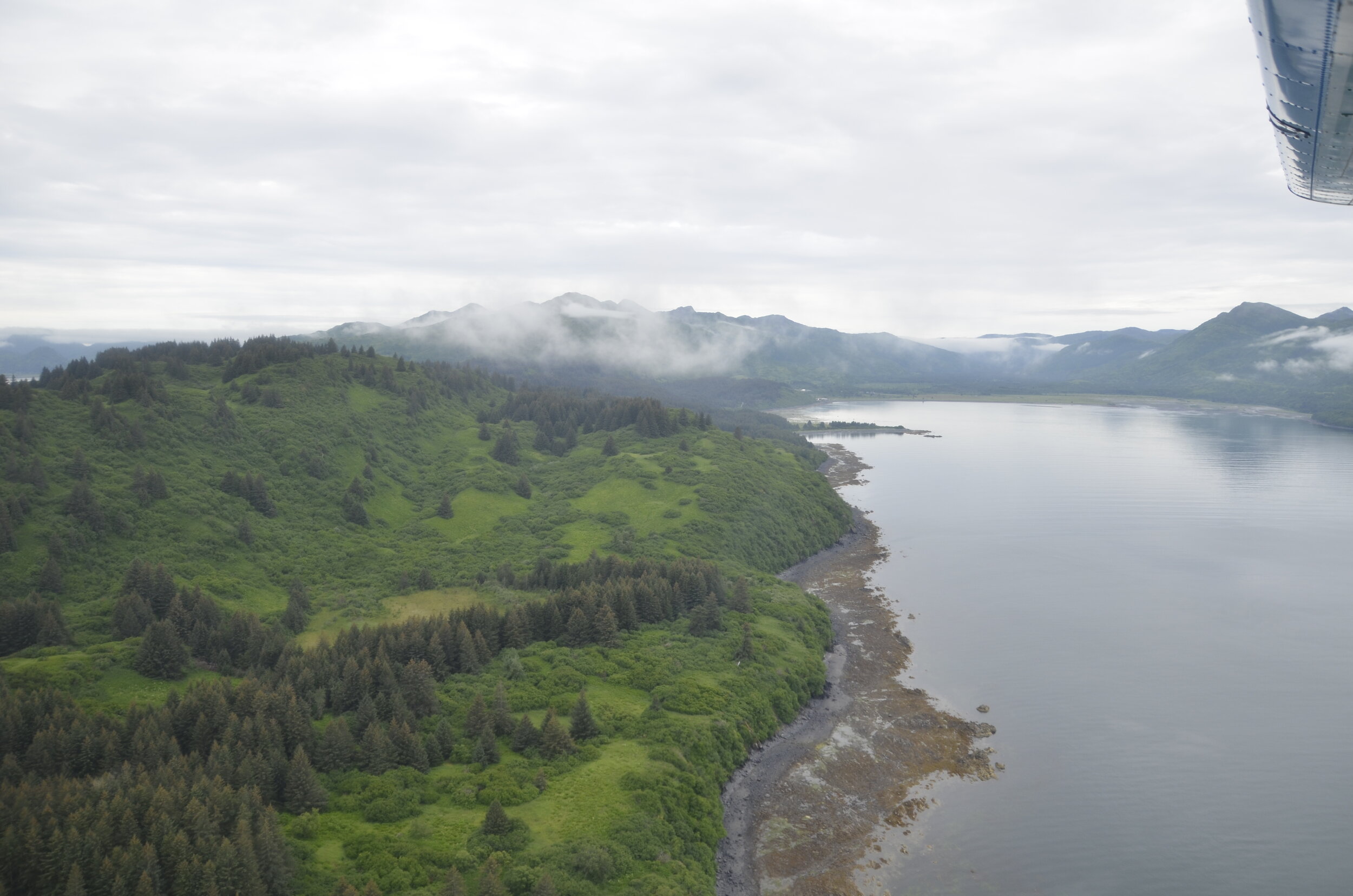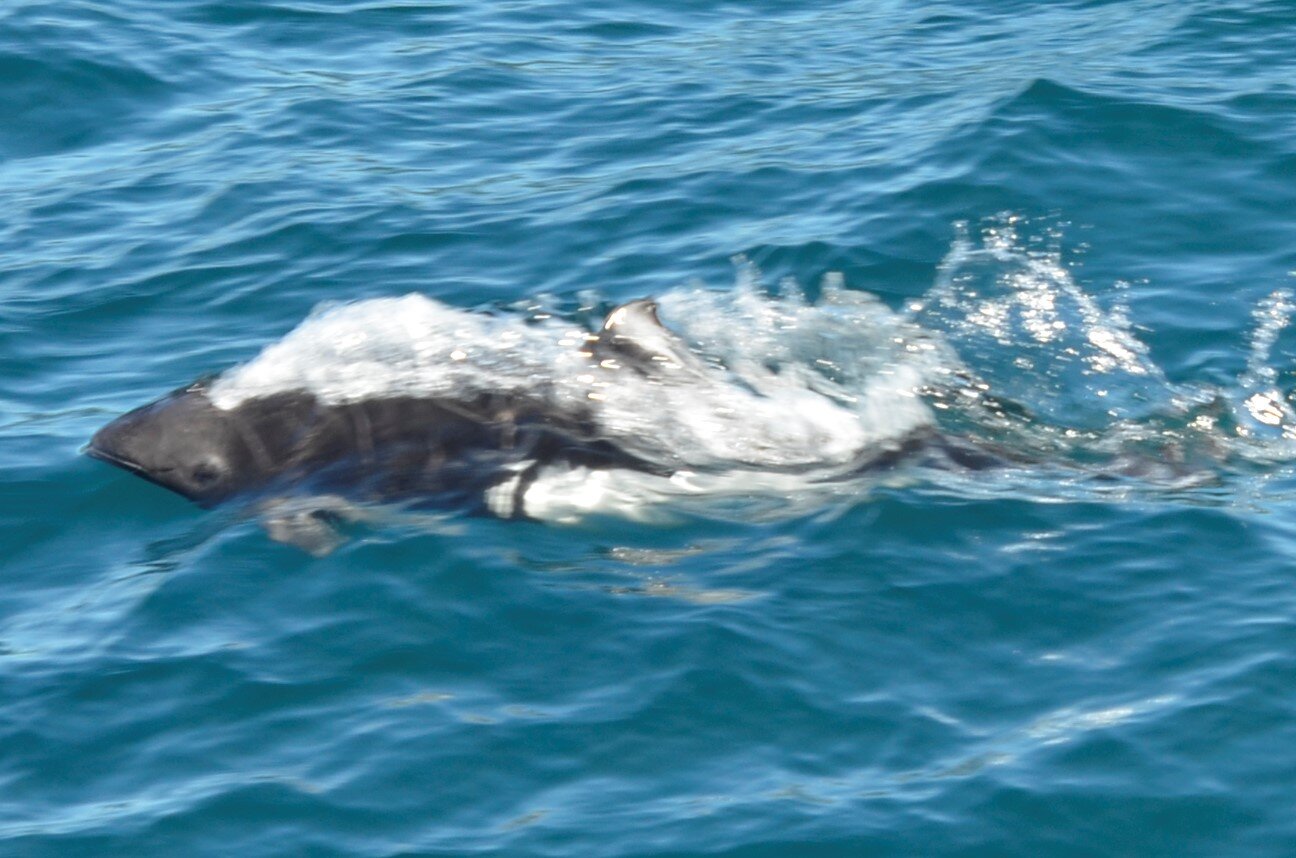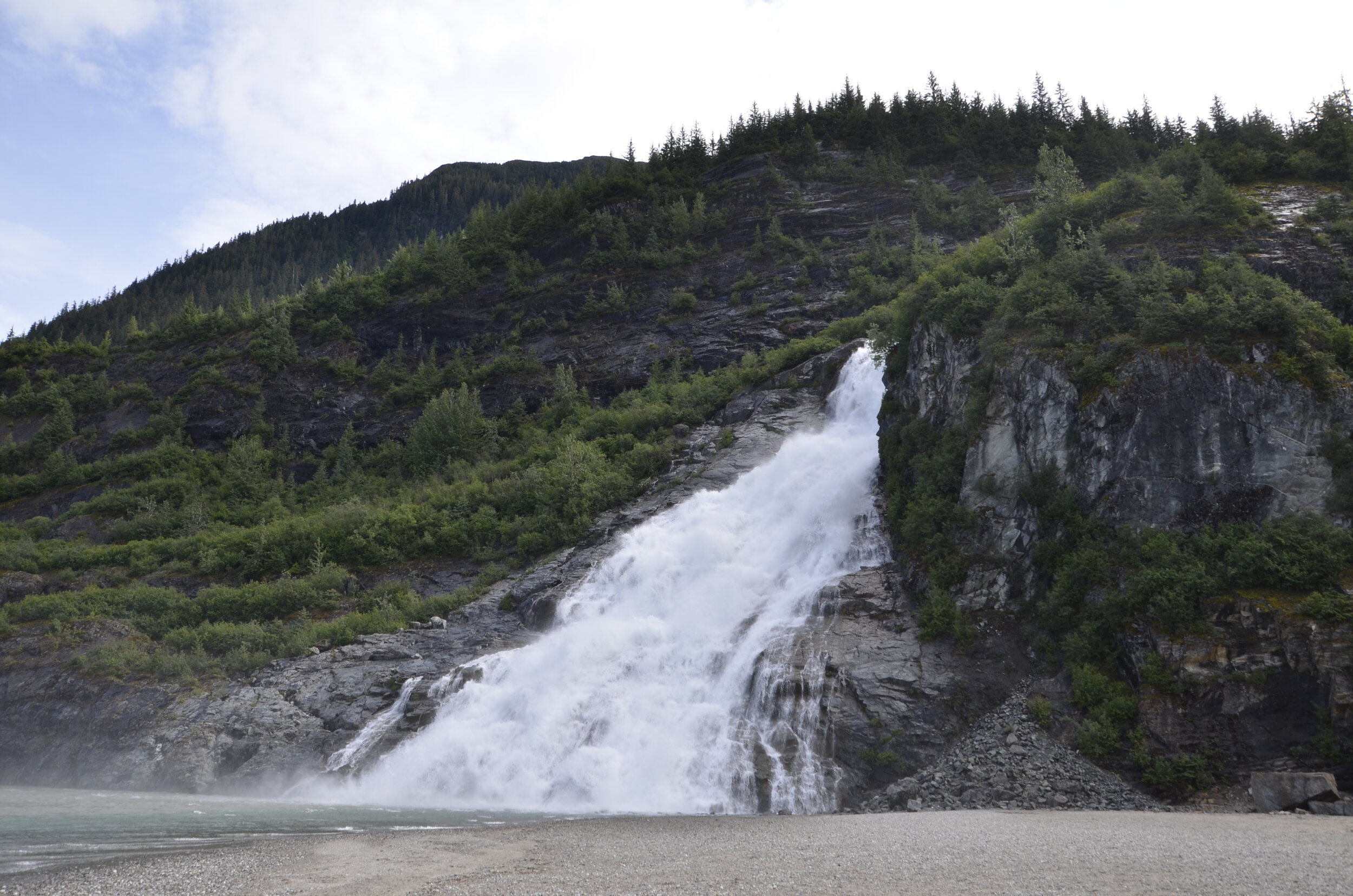Last, but definitely not least...bears!
For our last two days in Alaska, we flew to Kodiak Island, hoping to glimpse some of the famed enormous Kodiak bears. They are grizzlies (brown bears) like we’ve seen before, but on that island, have grown much larger due to better diet and isolation from the rest of their species.
We flew out on a float plane (forgive the early pictures that have the wing in the shot - I figured out later how to take decent shots without the wing in there) and at first it reminded us of the rainy SE of the state, but also Ireland with all the green and hills.
I had quickly volunteered to sit in the co-pilot seat…
I didn’t have anything to do with the flying. I just figured I’d have a great view. Everything was so green!
The general area where we would hike to, to observe the bears:
At the fish ladder, beside the falls in the river, to try and make it a bit easier for the salmon to get upstream (and the rangers to get a count of the fish going by) -
We finally got to see bears catching salmon, as well as lots of other activities -
At one point, we counted 14 bears in the small area we were sitting back and watching, including numerous different groups.
This mam was with her (probably) 2 yr old twins.
We had some awesome shots of intense concentration…
…as well as interesting idleness -
“Hey bro’, whatchya doin’?” -
Interestingly, we saw a number of adult bears fishing this way:
…while the youngsters looked on -
…and occasionally they were successful…
…but usually not.
The different groups we saw included a mama with 2 spring cubs -
(that were very curious) -
There were also a sibling pair that was probably in their 4th year (and first year on their own), checking out a mama and her twins:
There was an old sow that wandered out of the brush next to us, surprising us after we’d been there over an hour…
…but she just wanted to sit in the cool water of the river.
I didn’t see as many standing up as I was hoping to -
…but we did get to see several running at shoals of fish (but never successful in catching them that way) -
I watched one seemingly just put her paw down, swipe, and come up with a fish -
The best were the 2-3 yr triplets. They sat back waiting for mama to catch a fish…
…wrestled with each other…
…or mobbed mom when they were hungry.
I couldn’t believe that cubs this size were still nursing!
But that wasn’t all. On our way back, after passing over “Christmas tree heaven” (where all spruces wish they could end up):
…I mentioned to our guide that we’d not yet had the luck to see orcas. He said that they would just show up randomly, but you can’t count on them. As we passed by Whale Island (no joke), we spotted them!
So he landed on the water (!) and we waited for them to come to us.
We were really excited to see them this close…
…but as they got closer, I forgot to pull in my lens, so I didn’t get them all in the frame!
I think we can now safely check off orca on our wildlife checklist!
Our trusty steed:
That afternoon we went for a hike, and were reminded of how much rain Kodiak must get -
We hiked around a lake and loved the yellow pond lilies:
The night before we flew out of Anchorage, we had dinner at a restaurant overlooking Cook Inlet.
And thus ends our Alaskan saga. Tune in next time for…?
























































































































































































































































































